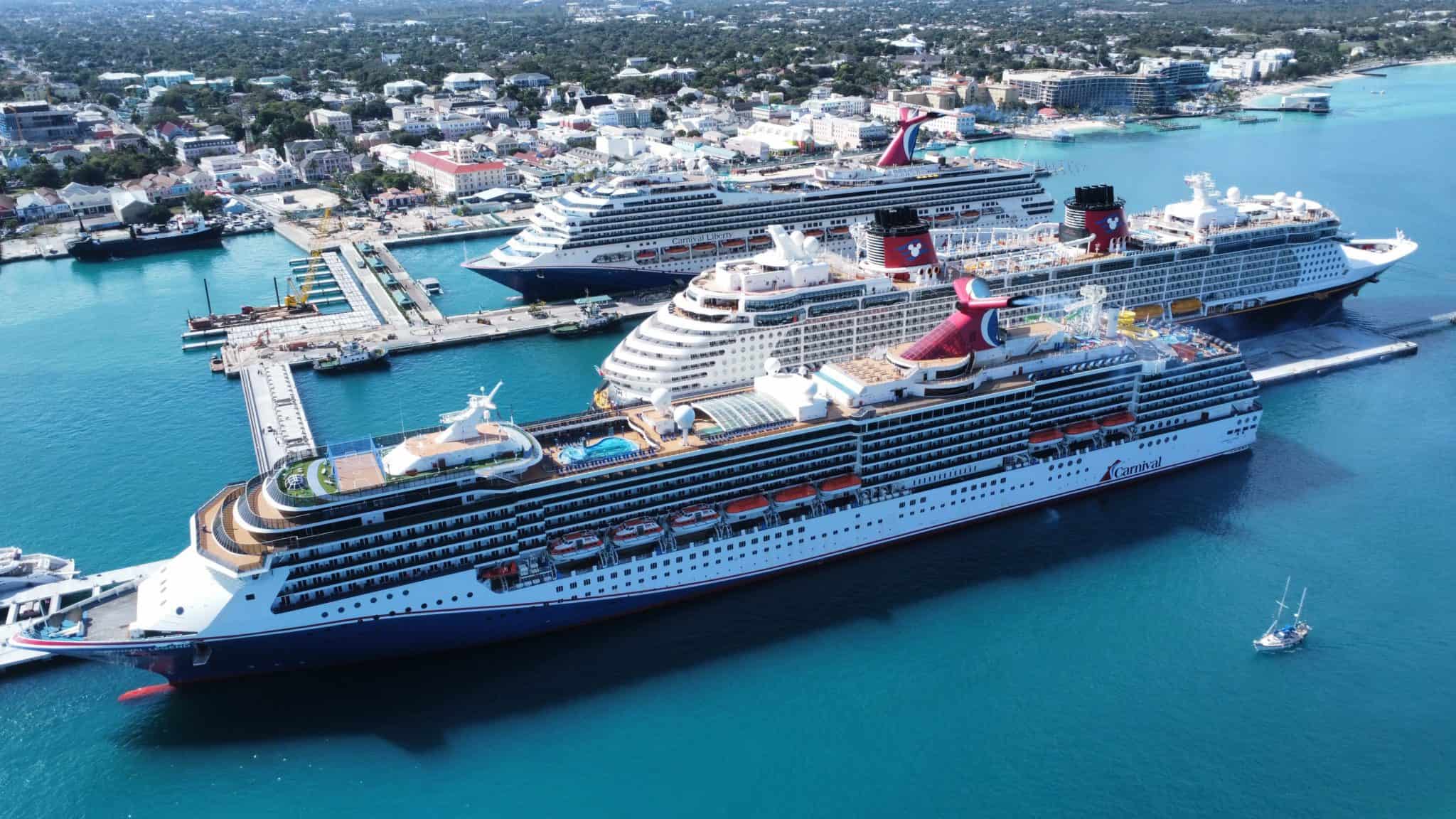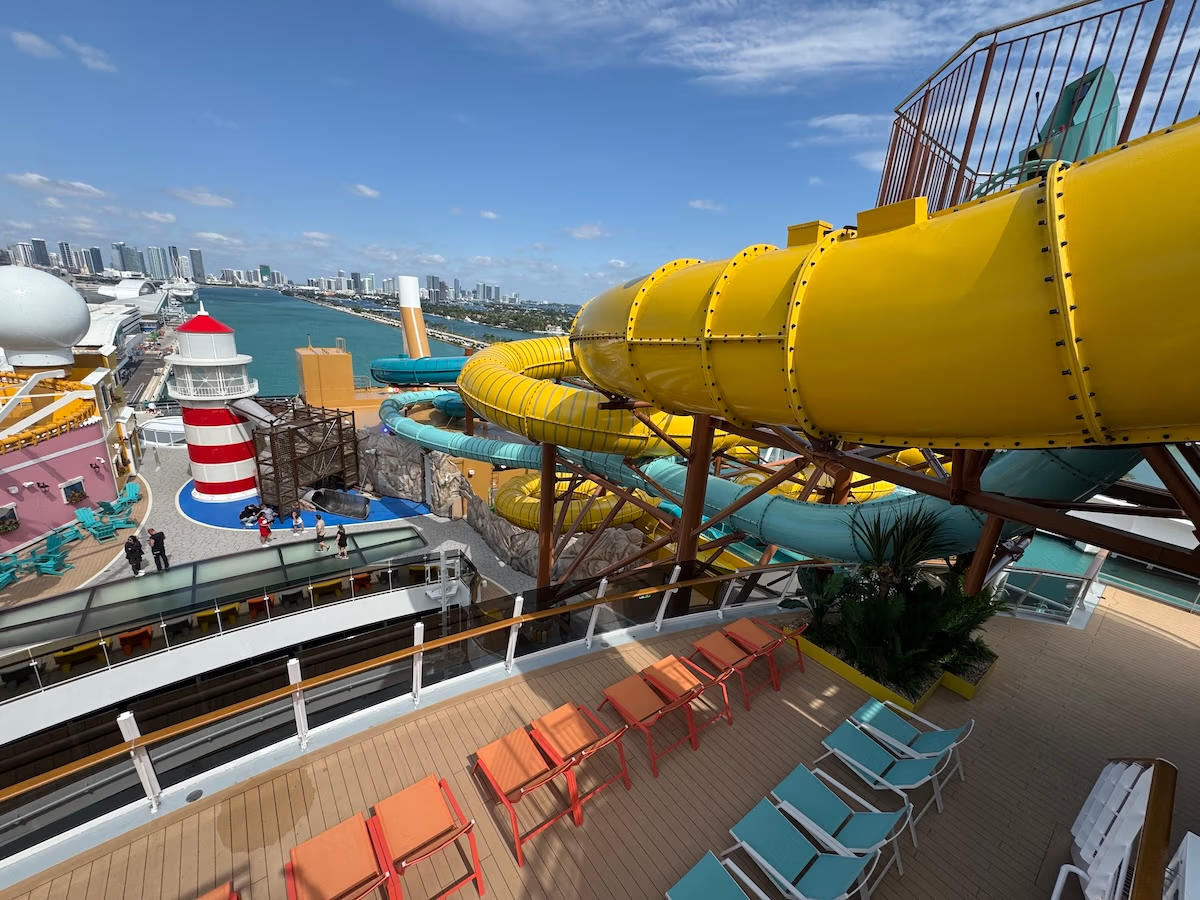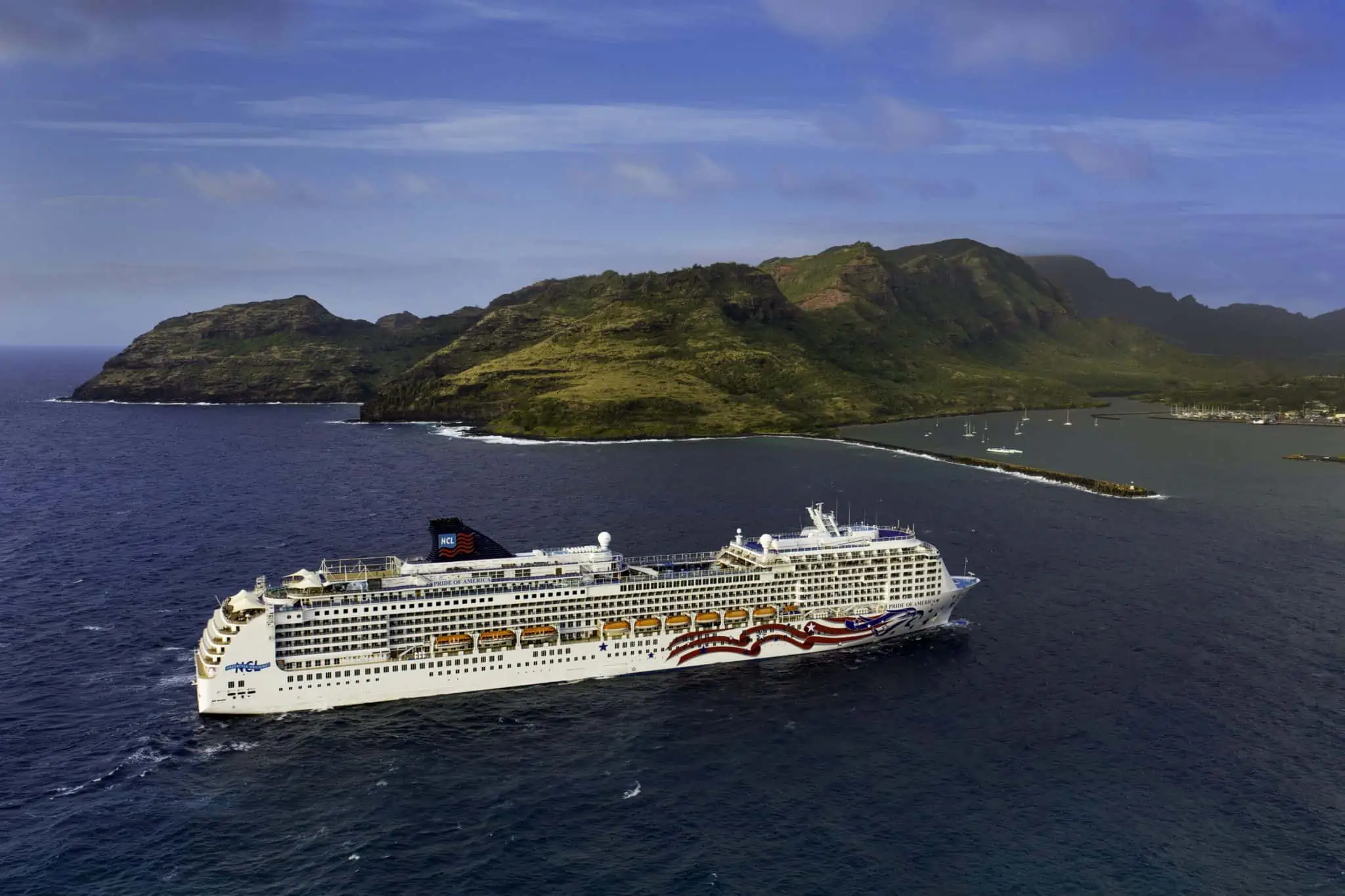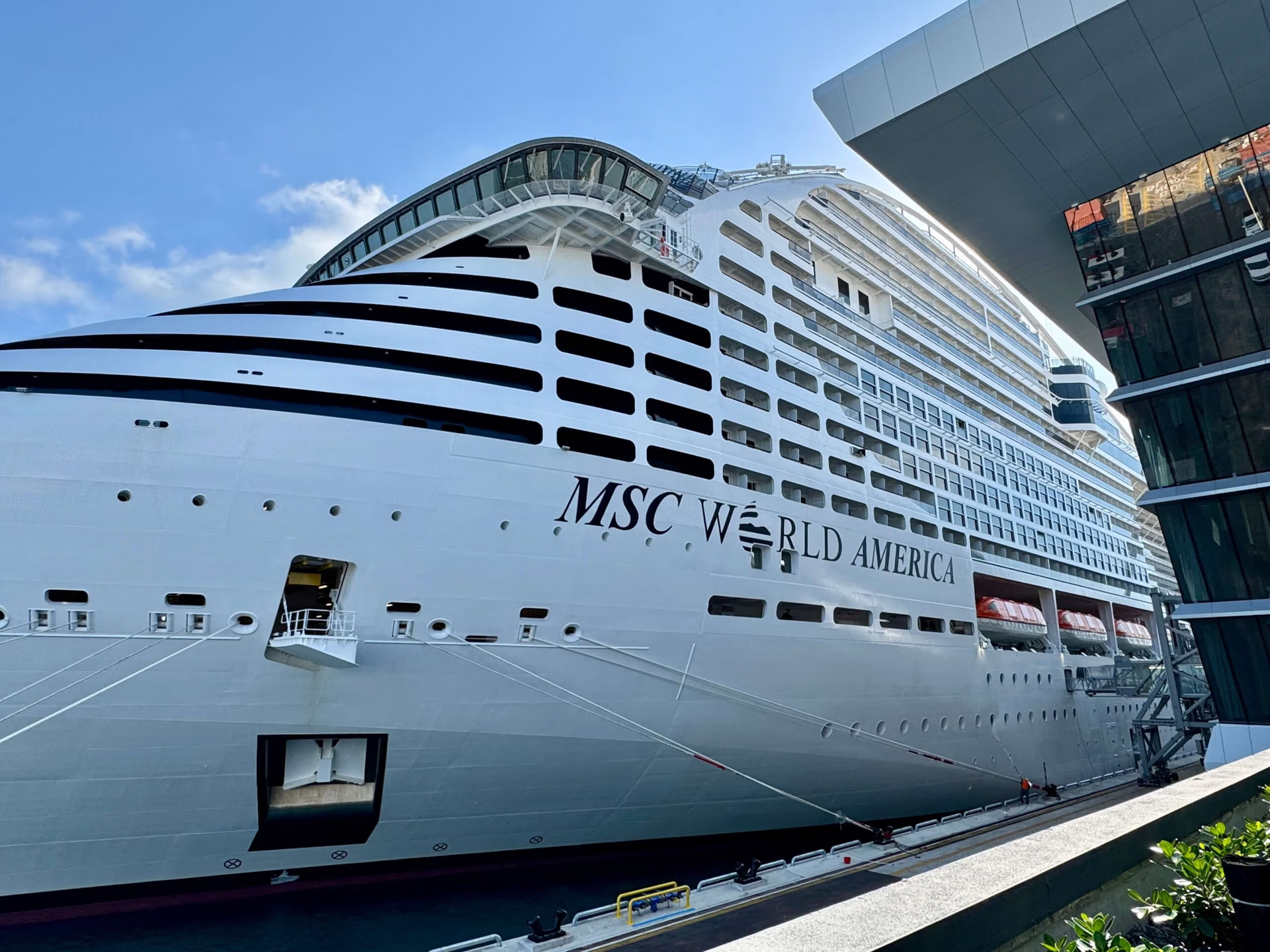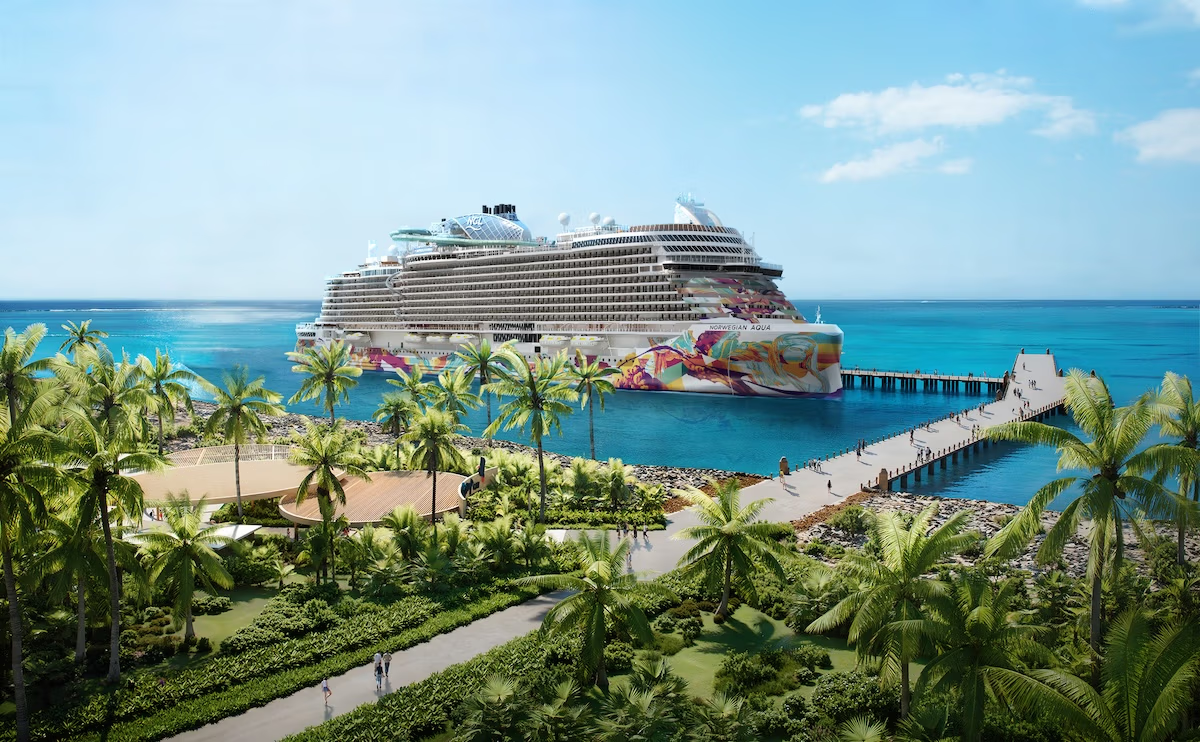These days, innovation and never-before-seen novelties are the name of the game in mainstream cruising. It’s what sets them apart from other lines, and what they can proudly showcase in marketing materials.
Among all the hits out there, such as top-deck water parks, projection-mapped dining, FlowRider surfing simulators, zip lines, and unique entertainment options, there are bound to be some duds as cruise lines experiment to find the next great onboard concept, feature, or layout.
Here, we explore nine cruise industry concepts that didn’t quite pan out the way the lines had hoped, as well as one bonus that could be considered a hit or miss depending on who you ask.
1: A Non-Smoking Cruise Ship
Who Tried It: Carnival Cruise Line
The Idea: An entire cruise ship on which no smoking would be allowed… period.
Why It Seemed Like a Good Idea: Ask anyone who doesn’t smoke, and they’ll tell you that they wish someone would launch a tobacco-free cruise ship. Having heard the complaint for years, Carnival Cruise Line decided to give in when it launched Paradise in 1998.
So serious were they about this effort that construction workers at the shipyard in Finland were not allowed to smoke on board while the ship was being built, and huge “No Smoking” symbols were prominently displayed on the hull.
Why It Didn’t Work: As it turns out, people who smoke spend a lot of money on things like drinking and gambling. Over time, Carnival came to realize that while the idea of an entire ship where smoking was forbidden might be a good one, it wasn’t worth losing a whole lot of money.
So by the end of 2003, Paradise‘s non-smoking policy was reversed. (A few years later, the word “Carnival” would be added to the ship’s name, along with the others in the fleet. That’s remained the case to this day with the only exception being the recently-launched Mardi Gras.)
Might Someone Try Again? Never say never, but it seems highly unlikely. Instead, cruise lines are more likely to try and have their cake and eat it, too, by expanding non-smoking areas within casinos, creating fully-enclosed smoking areas, and otherwise limiting the spaces in which those inclined to light up can do so.
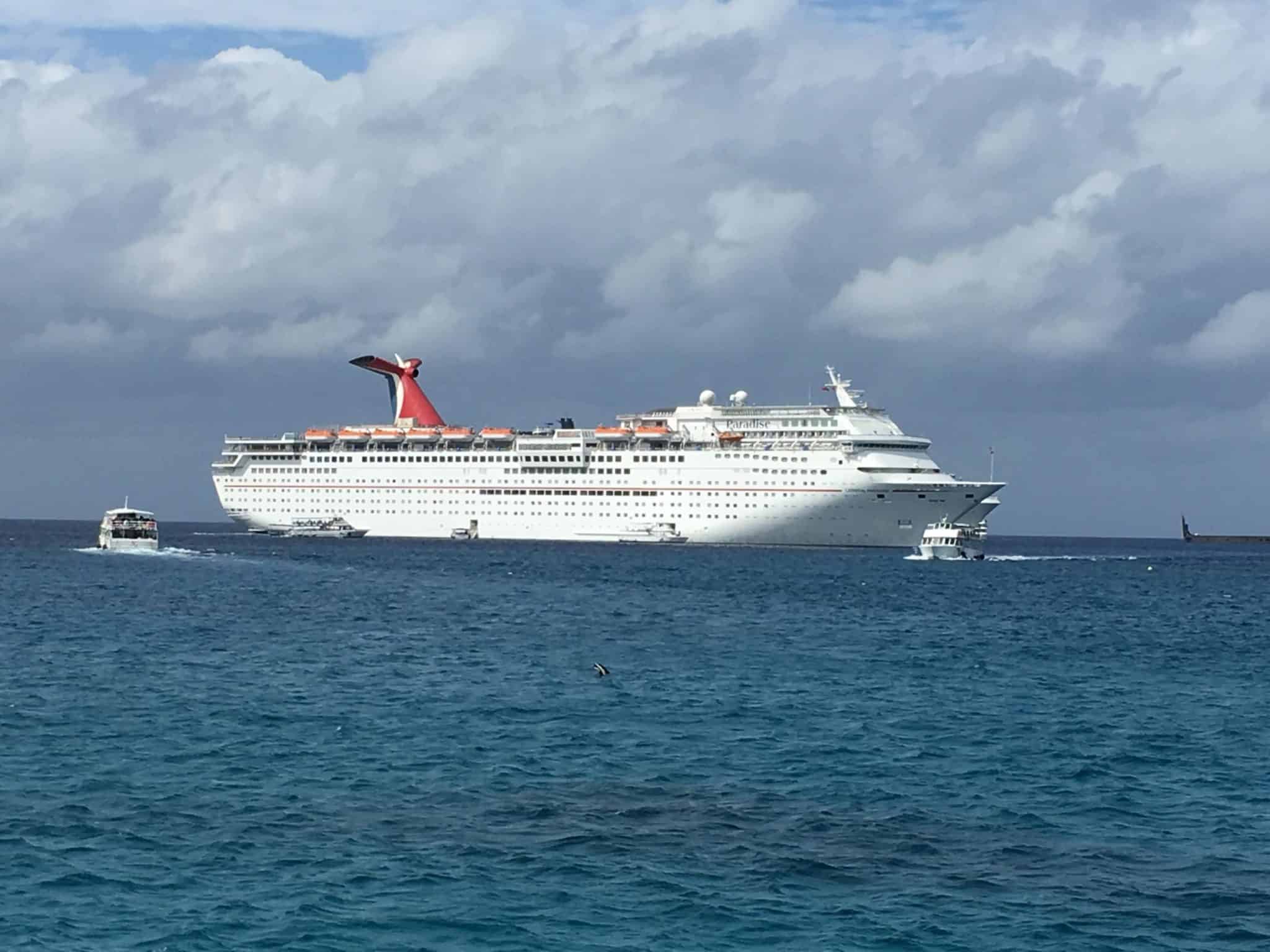
2. Split Bathrooms
Who Tried It: Norwegian Cruise Line
The Idea: Split cabin bathrooms with the sink essentially in the living space.
Why It Seemed Like a Good Idea: When Norwegian Epic launched in 2009, it introduced a new concept for the line: split bathrooms. They allow multiple people to get ready at the same time (one in the shower, one using the toilet, one using the sink) without having the type of privacy issues you would have in a traditional cruise cabin bathroom with a glass shower door or flimsy curtain, toilet, and sink all in one room.
Why It Didn’t Work: Here’s how the bathrooms are laid out on Norwegian Epic. When you walk into your cabin from the hallway, the shower with a glass door is on one side, and the toilet is on the opposite side in a tiny room with a door of its own. The sink is, essentially, out on a little countertop in the cabin’s living space next to the shower area.
There is a curtain that separates this little bathroom/entryway area from the rest of the cabin, but it’s still an odd design. Many passengers are not fond of the layout — especially those who may not be traveling with close family members. You also run the risk of a cabinmate opening the cabin door while you’re trying to use the bathroom space, and even if the curtain is up, it’s not on the door side!
Might Someone Try Again? Norwegian has not done split bathrooms in standard staterooms on any ship since Epic. The exception is the line’s solo cruiser studio cabins. They, too, feature somewhat of a split bathroom concept, with the sink area in the cabin, the shower to one side of the cabin door with a frosted glass door, and the toilet with its own regular door on the other side. This is presumably not as much of a problem for those who are traveling by themselves.
However, there is another cruise line that has been successful with a slightly different version of a split bathroom in many of its standard cabins: Disney. We believe Disney’s split bathrooms have been well-received because instead of putting the sink in the cabin, they have a shower and sink on one side with a door, and a toilet and another sink on the other side with another door.

3. Voluntourism Cruises
Who Tried It: Carnival Corporation
The Idea: Carnival Corporation founded what it called a “social impact” cruise line named Fathom back in 2015, which would sail to various Caribbean destinations (starting with the Dominican Republic).
Passengers would split their vacation time between relaxing and having fun with helping serve communities in some of the ports of call. The ship, by the way, was the Adonia, which was sailing for sister line P&O Cruises before it was transferred to become Fathom’s first vessel.
Why It Seemed Like a Good Idea: Everyone knows that tourism dollars, including the massive amounts of money spent by cruisers in ports of call, help the economy a lot in port destinations.
But Carnival Corporation wanted to take it a step further and actually allow guests to do some work to benefit the community on the ground in some of those places. It’s a noble cause, and would give passengers a taste of what it’s like to go on a missions trip without multiple days’ worth of commitment to do it.
Why It Didn’t Work: Fathom set out on its first cruise in early 2016 to do volunteer work in the Dominican Republic, and very quickly Cuba was approved as another destination for the line. Adonia visited Cuba in May 2016 — the first time a U.S. cruise line had sailed from the United States to Cuba in over 50 years.
However, the work + play cruise concept did not prove popular among travelers, especially considering the fact that there weren’t very many interesting features on board the older ship to attract cruisers looking for fun in the sun between work on the ground. In late 2016 — the same year it took its first voyage — Carnival Corporation announced that Fathom cruises would be discontinued in 2017.
For a short time, some of Fathom’s social impact excursions in the Dominican Republic became available to guests on other Carnival Corporation cruise lines, but those were eventually phased out as well.
Might Someone Try Again? We can see the possibility of cruise lines introducing volunteering shore excursions into their lineup, like some other Carnival Corp. brands did after Fathom shut down. But another attempt at an entire cruise line just based on missions-type work? Probably not.
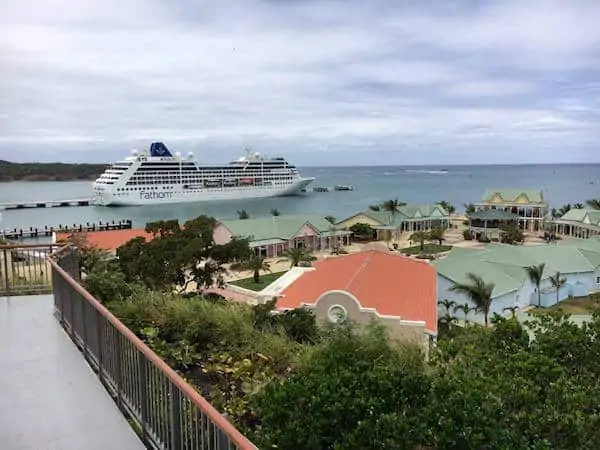
MORE: Do You Need A Passport to Go on a Cruise?
4. A Virtual Cruise Assistant
Who Tried It: MSC Cruises
The Idea: With MSC Cruises’ launch of MSC Bellissima in early 2019, the line also launched its first stateroom “virtual personal cruise assistant” called ZOE. The voice-enabled, artificial intelligence device was tested on Bellissima, and then added to MSC Grandiosa when it launched in late 2019.
Why It Seemed Like a Good Idea: The premise of the Alexa-esque device was to allow passengers to ask questions about the cruise that they may otherwise have to ask crew members or guest services representatives. The hope was that it would clear up space in the customer service line, and travelers could get answers to their questions without having to leave their stateroom or even pick up the phone.
Why It Didn’t Work: It seems that the smart device isn’t so “smart,” which has caused more frustration than convenience for many cruisers.
We’ve seen multiple instances where guests have asked seemingly basic and simple questions about things such as the open hours for various onboard venues, what the next port is, or what the current weather is like outside. In most cases, ZOE either said to contact that specific venue or guest services for the answer, or offered to turn on the stateroom TV to get the answer there (such as the ship’s weather channel)… overall pretty unhelpful.
Might Someone Try Again? When ZOE was announced, MSC said that it would also be added to MSC Virtuosa, which entered service in 2021. However, it doesn’t appear that the device made it onto that ship, and it isn’t difficult to see why. We have a pretty good hunch that MSC Cruises won’t be implementing any more AI cruise assistants anytime soon. Currently, MSC’s website lists only MSC Grandiosa as having the ZOE devices onboard.
We can’t say whether other cruise lines will implement their own virtual cruise assistants in the future. We can say that it if they do, they would need to do a much better job than MSC for it to be successful.
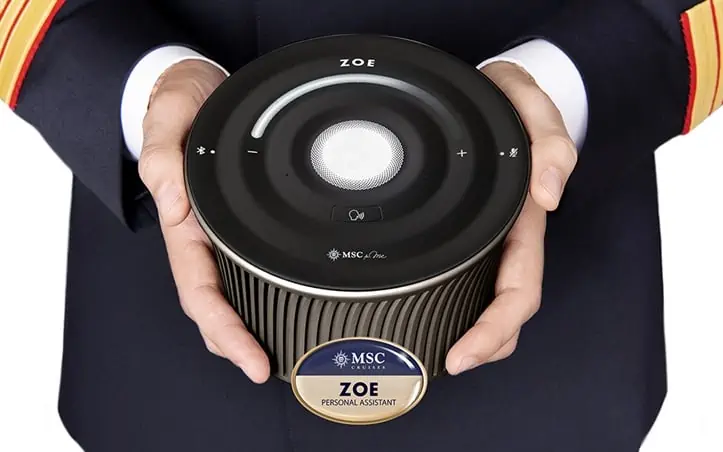
5. Sleek, Very Minimal Cabins
Who Tried It: Virgin Voyages
The Idea: Virgin Voyages is a very new cruise line, having first launched revenue cruises in 2021. The style onboard is very modern and trendy, which for some spaces translates to quite minimal. The cabins are one of the areas where the cruise line went minimal both with function and décor.
Why It Seemed Like a Good Idea: The line was just keeping with its aesthetic when it designed the passenger cabins, and some have more to them than others (such as the largest suites which include their own music rooms). The majority of the cabins, though, are quite minimal, which did allow for guests to move around easier in their cabins.
Why It Didn’t Work: In early 2022, Virgin Voyages announced that it was in the process of refreshing the cabins on both of its ships, Scarlet Lady and Valiant Lady. You might be thinking, How is this a concept that didn’t catch on? Cabins are refreshed on cruise ships all the time but it doesn’t mean they weren’t fine before.
But timing has a lot to do with it — these ships are not old… at all. Scarlet Lady debuted last year, and at the time of writing Valiant Lady hasn’t even set sail on her first voyage with guests yet. Initial passengers on Sir Richard Branson’s brand-new cruise line complained about a lack of storage in the cabins, and it’s safe to say that the modern, almost stark accommodations weren’t exactly what you’d call “cozy,” either.
With passenger feedback in mind, the line set out to make some slight changes to its cabins with new wooden accents, artwork, and additional storage solutions.
Might Someone Try Again? This isn’t really a “try” or “don’t try” type of deal. Each cruise line does their cabins differently, and some will always be cozier than others. We do believe, though, that other lines are watching and will be learning through Virgin’s mistake that passengers very highly value inviting staterooms with plenty of storage options.

6. Edenists in Eden
Who Tried It: Celebrity Cruises
The Idea: When Celebrity Cruises first detailed its Edge-class ships, one of the big reveals was a stunning lounge and restaurant in the back of the vessel called Eden. This space was a relaxing venue by day, but really came alive at night with lighting effects, a bar, an amazing restaurant downstairs, and roaming mythical characters called “Edenists.”
Why It Seemed Like a Good Idea: The Edenists took guests through a winding multilevel journey of the space. During the walk, the actors would ask you all about yourself and tell you about the land you’re walking through. It was a neat way to involve passengers in the “show” and immerse them in the story and the venue.
Why It Didn’t Work: While the space is very cool with living plants and panoramic views of the ocean, the Edenists and their involving guests in the show was a little too in-your-face for some travelers. The feedback forced Celebrity to go back to the drawing board and revamp the evening programming.
The space itself hasn’t changed, but the acts inside of it has, with more live music and acrobatic performances (without audience participation) being held in the space.
Might Someone Try Again? Eden is such a unique space to begin with, we can’t see any other cruise line replicating the space and experience as a whole the same way Celebrity has.
As for Celebrity themselves, we can’t speak on what entertainment concepts they may come up with in the future that they might try to involve guests in again, but we don’t believe that will ever be repeated in Eden.

RELATED: 15 Photos of Eden on Celebrity Edge
7. Dynamic Dining
Who Tried It: Royal Caribbean
The Idea: Back in 2014, Royal Caribbean introduced a new program for main dining dinner on Quantum of the Seas called Dynamic Dining. The basic concept was this: the ship had four main dining rooms (each with a different theme), and passengers could choose when and where they wanted to eat each night without any type of schedule.
Quantum’s sister ship, Anthem of the Seas, had a variation of Dynamic Dining called Dynamic Dining Classic, which was similar to Disney Cruise Line’s rotational dining system. Passengers could choose a set time to eat dinner each evening, with the same tablemates and waiters. They ate at a different restaurant each night, rotating among the four main restaurants on the ship.
Why It Seemed Like a Good Idea: Dynamic Dining was basically My Time Dining, but instead of having the choice between My Time Dining and traditional set time dining which you’ll see on most major lines today, there was no traditional choice at all.
On the surface, this appears to be a good idea because it allows every passenger complete flexibility when it comes to dinner — absolutely no one was on a set schedule and everyone could eat when they wanted each night.
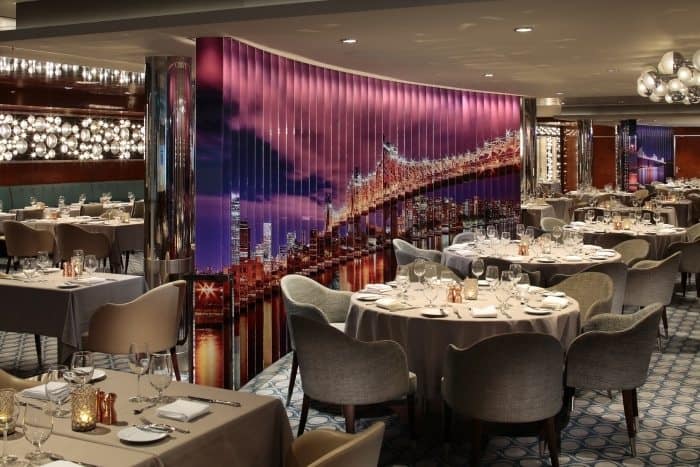
Why It Didn’t Work: Royal Caribbean intended to roll out its Dynamic Dining program across the fleet. But due to a number of issues — including lots of angry passengers who liked having the option of traditional set time dining — Dynamic Dining and Dynamic Dining Classic were completely scrapped in late 2016. It turns out that the sweet spot for many cruise lines when it comes to dinner is to offer both traditional set-time seatings as well as flexible My Time Dining.
Might Someone Try Again? There are already many cruise lines that only offer flexible dining at dinner, such as Norwegian Cruise Line and Viking. Lines that have much smaller ships and a better passenger to space ratio like Viking are able to do this easily because there are simply not as many people, and you’re less likely to have to wait to be seated.
On Norwegian, there are lots of people, but an important element that we believe helps passengers stay happy is the ability to make reservations in the main dining room. Even though there is no set time every evening, those who want to all but guarantee that they won’t have a wait can make reservations for every night — it’s somewhat of a replacement to just being assigned a seating with traditional dining.
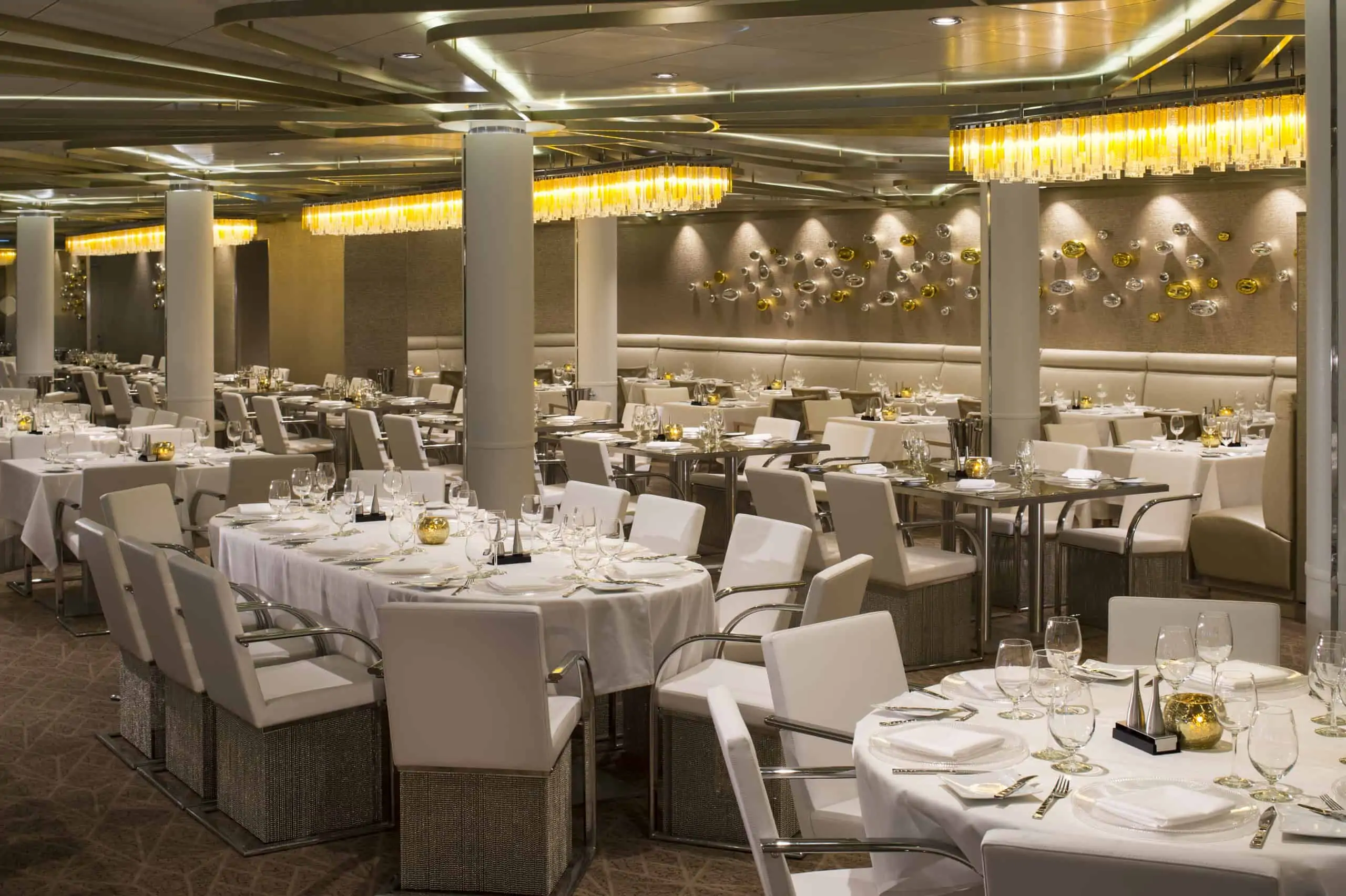
8. NCL America
Who Tried It: Norwegian Cruise Line
The Idea: Around the turn of the 21st century, Norwegian Cruise Line wanted to expand into the Hawaii cruise market in a big way. So the company formed NCL America.
In 2002, Norwegian Cruise Line purchased the half-completed hull from American Classic Voyages’ first Project America ship, which was under construction at a shipyard in Mississippi. It was then towed to a shipyard in Germany, and completed — becoming Pride of America.
In 2004, Norwegian Cruise Line announced that Norwegian Sky would be reflagged and renamed Pride of Aloha and moved it to Hawaii. Then the line had a second new build, called Pride of Hawaii. She was the largest and most expensive U.S.-flagged passenger ship ever built.
Why It Seemed Like a Good Idea: With U.S.-built cruise ships, NCL America would be able to sail in the Hawaiian islands without having to worry about calling on a foreign port, per the Passenger Vessel Services Act of 1886.
Considering how far away Hawaii is from any other cruise destination, it appears to make wonderful economic sense to put ships in Hawaii that can stay in Hawaii — simply sailing around the state’s islands without worrying about having to stop in another country. This also means that cruises can be much shorter and accessible to more people.
Why It Didn’t Work: The intention was to operate all three vessels in the Hawaiian Islands, and their U.S. flag designations would mean that they didn’t have to call on a foreign port — even though they were almost completely — or completely — built in a foreign country. This turned out to be an expensive move with paying U.S. wages and tax laws.
Because of high operating expenses, Pride of Aloha was transferred back to Norwegian Cruise Line and reclaimed its original name Norwegian Sky. Pride of Hawaii was reflagged to Nassau and renamed Norwegian Jade. To this day, Pride of America is still sailing Hawaii.
Might Someone Try Again? These days, nearly all large cruise ships are built in Europe or Asia, and the U.S. is not a top choice when it comes to cruise vessel construction. We could see a smaller luxury line ordering a small ship from a U.S. shipyard and charging enough in cruise fare to offset the cost of U.S. wages and taxes, like American river cruise lines do.
But otherwise, we can’t see another large, mainstream cruise brand attempting to compete for business with Pride of America.

9. An Onboard Tattoo Shop
Who Tried It: Virgin Voyages
The Idea: It could be said that when Virgin Voyages first announced some of the features and entertainment that would be found on its ships, it was going for the shock factor (as far as cruise ships were concerned). One such feature that surprised probably everybody was a tattoo parlor, aptly called Squid Ink.
Why It Seemed Like a Good Idea: Before it launched its first ship, Virgin was very vocal about how it wanted to do cruising differently and shake up the industry. This was one of the ways they came up with to do that — no other cruise line has a tattoo shop onboard.
It really is a unique and novel idea, and a tattoo would, in theory, make for a cute (and permanent) reminder of your vacation.
Why It Didn’t Work: When thinking logically, tattoo shops are not on cruise ships for a good reason. During the healing process after getting a tattoo, the spot needs special care; it doesn’t just instantaneously heal itself. So mix a brand-new tattoo with days of exploring islands, swimming in the pool and sea, and lots of sun exposure, and it doesn’t really make sense to get one on this type of vacation.
Might Someone Try Again? Are people still getting tattoos on Virgin Voyages? Of course. We’ve heard that quite a few people get small tattoos to remember the trip by — and to say they got a tattoo out at sea. But can we see this concept being repeated by any other cruise lines in the future? Not really.

BONUS: Digital Portholes & Balconies
We’re including these digital “windows” as a bonus because even though they seem gimmicky, many guests actually really like them.
If you’re unfamiliar, Disney Cruise Line and Royal Caribbean have brought the outdoors to interior cabins via porthole or balcony window-shaped screens that display in real-time the view off the side of the ship that it is facing.
Disney Cruise Line’s Disney Fantasy and Disney Dream both feature what it calls “Magical Portholes,” which — in addition to the real-time outdoor view — display fun Disney surprises from time to time. For example, you might see Peach the sea star from “Finding Nemo” stuck to your porthole “window,” or Russell from “Up” floating up, up, and away under a canopy of balloons.

Royal Caribbean took it a step further on a number of its ships, offering interior cabins that come with virtual balconies. The screen displays the view and a virtual balcony railing, and the cabin even includes real curtains like you would find in an actual balcony stateroom.
Royal Caribbean appears to still be doing the virtual balcony concept, as its newest ship Wonder of the Seas does include them. Disney, however, may have abandoned its Magical Portholes for future projects, as its upcoming ship Disney Wish does not feature them.
Note: If you’re intrigued by the idea of staying in one of these cabins, but are worried about a bright screen being on and in your face during the whole cruise, worry no more. The virtual portholes and balconies can be turned off.

READ NEXT: 25 Tips For First-Time Cruise Passengers
Pin it!

